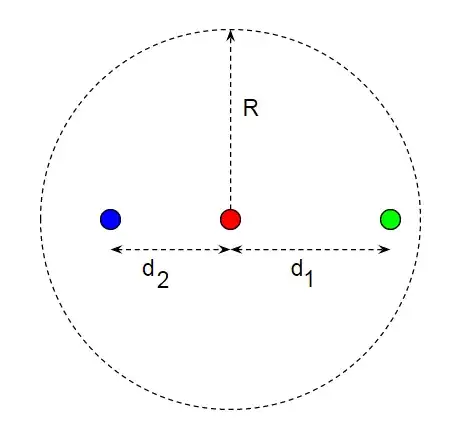Let me try and rephrase your question to make it simpler to answer. Suppose you are a comoving observer in a de Sitter universe, then you are at the centre of a spherical event horizon with some constant radius $R$:

You can receive a signal from the green dot because it's inside your horizon, and you can send a signal to an observer at the blue dot because it's inside your horizon. The sum of the distances $d_1 + d_2$ can have any value less than $2R$, but doesn't that mean an observer at the blue dot can receive signals from the green dot at a distance greater than $R$ i.e. from outside their horizon?
To understand what is going on you need to consider the motion of the observer at the blue dot. There are three main cases:
the blue observer is a comoving observer, in which case they are moving away from you with velocity $Hd_2$, and is being accelerated away from you by the expansion.
the blue observer is momentarily stationary with respect to you, but is being accelerated away by the expansion.
the blue observer remains stationary relative to you using some form or rocket motor.
Case 1 is the easy case since in the time the signal takes to reach you from the green dot the blue observer will have accelerated away. If the sum of $d_1 + d_2 > R$ then by the time you receive the green signal the blue observer will be on a trajectory that outpaces the signal you send so they'll never receive it.
Case 3 is harder because the position of the horizon will be different for a non-comoving observe. The acceleration will contract the horizon distance opposite to the blue observer and extend it in your direction. This does indeed allow the blue observer to receive signals from a distance greater than $R$ in the direction of the acceleration. The flipside is that the horizon moves inwards in the opposite direction.
Case 2 I confess I'm not sure about. I would have to do some calculations to convince myself I understood what was going on, however it seems plausible that a non-zero peculiar velocity would affect the horizon position.
All this is qualitative, and to make it concrete you'd need to calculate the geodesics of the light and the geodesics of the blue observer. I'll think on this, but I suspect this is a messy calculation to do.
